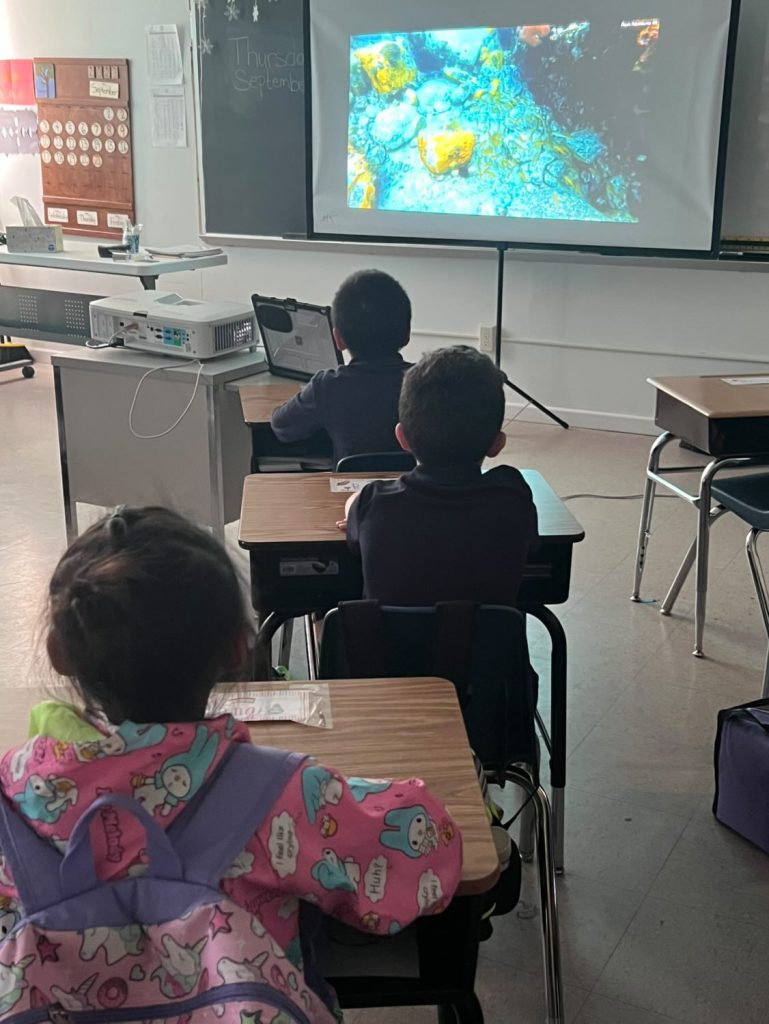Do you have have that time in your day that you need the whole room quiet so that you can pay attention to dismissal or hear over the loud speaker. I know for me, we have the whole grade dismissal from one room and it can become very overwhelming and loud. The last thing I want to happen is not hear when a bus or car number has been called, and a student miss their bus. My amazing teammate, Kelsey started watching sand AMSR videos and the kids were obsessed… and so was I! Then I went down a rabbit hole on research and finding different types of videos I could have the kids watch during these times. First, I wanted to know what AMSR really was. ASMR stands for autonomous sensory meridian response; a term used to describe a tingling, static-like, or goosebumps sensation in response to specific triggering audio or visual stimuli. These sensations are said to spread across the skull or down the back of the neck and, for some, down the spine or limbs. Thank you Nebraska Medicine, if you want to know more, check them out.
What triggers ASMR and the calming response?
- Tapping and Scratching: Gentle tapping or scratching sounds on various surfaces, such as tapping fingernails on a table or scratching a textured object, can be effective triggers. Hearing domino fall.
- Crinkling: The sound of crinkling paper, plastic, or fabric.
- Eating and Cooking Sounds: Listening to sounds of eating, drinking, or cooking or sizzling.
- Page Turning: The sound of flipping through the pages of a book or magazine.
- Water Sounds: The sound of running water, like in a gentle stream, a waterfall, or tapping fingers in a bowl of water, can be soothing for some people.
- Visual Triggers: Watching someone carefully complete a task, draw, or create intricate designs.
- Nature Sounds: The gentle sounds of nature, such as birds chirping, leaves rustling, or waves lapping at the shore.

5 Ways Watching calming videos can have several benefits for students
1. Stress reduction: Calming videos often feature soothing visuals, relaxing music, or nature scenes that can help students unwind and reduce stress levels. This can be particularly beneficial during exam periods or when students are feeling overwhelmed.
2. Improved focus and concentration: By watching calming videos, students can take a break from their regular study routine and give their minds a chance to relax. This can help improve focus and concentration when they return to their tasks, making their study sessions more productive.
3. Enhanced mood and emotional well-being: Calming videos can have a positive impact on students’ mood and emotional well-being. They can help alleviate feelings of anxiety, sadness, or frustration, promoting a more positive mindset and overall emotional balance.
4. Increased mindfulness and self-awareness: Calming videos often encourage mindfulness and self-awareness by promoting a sense of tranquility and encouraging viewers to focus on the present moment. This can help students develop a greater sense of self-awareness and improve their ability to manage their emotions and stress levels.
5. Reduced physical tension: Watching calming videos can help students relax their muscles and reduce physical tension. This can be particularly beneficial for students who spend long hours sitting and studying, as it can help prevent or alleviate physical discomfort and promote a more relaxed state of being.
Overall, watching calming videos can provide students with a much-needed break, promote relaxation, and contribute to their overall well-being and academic success.
I just wanted to send this to you because the ASMR videos have completely changed pick up time. What a great idea, thank you! – @TYshort
Photo Credit: @TYshort
Give me all the videos!
Here are some types of videos that are known to have a calming effect on students, you can use these search terms to find the latest and greatest. If you find a great one your student’s love, add it to the comments or send it to me through IG.
1. Nature scenes: Videos featuring serene landscapes, such as forests, beaches, or waterfalls, can help students feel more relaxed and connected to nature.
2. ASMR (Autonomous Sensory Meridian Response): ASMR videos often involve gentle sounds, whispers, or soft spoken voices that trigger a tingling sensation and promote relaxation.
3. Guided meditations: Videos that offer guided meditation sessions can help students practice mindfulness, reduce stress, and achieve a state of calmness.
4. Slow-motion or time-lapse videos: These types of videos can create a sense of tranquility by slowing down or speeding up the pace of everyday activities or natural phenomena.
5. Ambient music or sounds: Videos featuring soothing ambient music or calming sounds, such as rain, waves, or bird songs, can create a peaceful atmosphere and help students relax.
6. Art therapy videos: Videos that showcase art techniques, such as painting or drawing, can have a calming effect on students by engaging their creativity and providing a sense of focus and tranquility.
7. Yoga or stretching routines: Videos that guide students through gentle yoga or stretching exercises can help them release tension, improve flexibility, and promote relaxation.













Pingback: Soothing Tones For Calm Cooking - ABC Home Ltd
Pingback: Top 5 Benefits Of Positive Routines For Happy